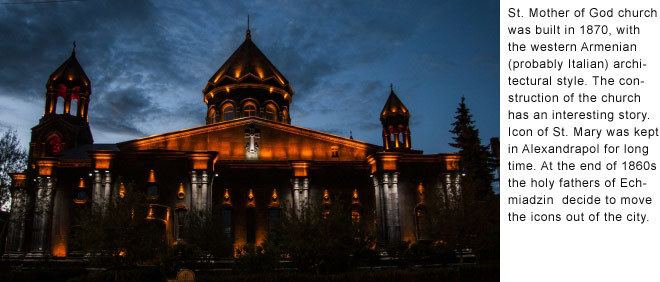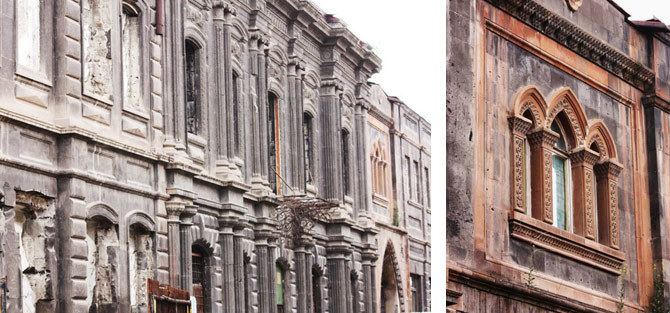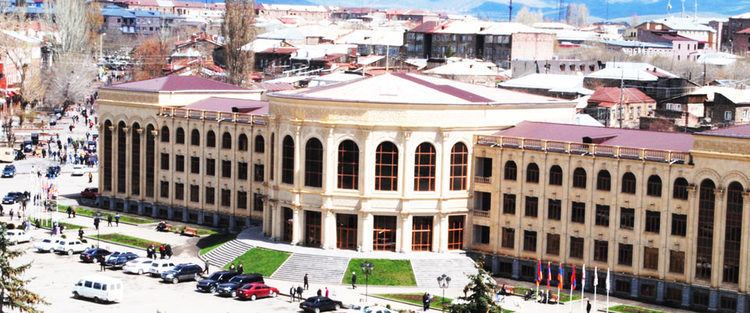Country Elevation 1,509 m Population 146,355 (2009) Area 54 km2 | Founded 5th century BC as Kumayrirebuilt in 1837 as Alexandropol Mayor | |
Gyumri (Armenian: ) is the second largest city in Armenia and the capital of the Shirak Province in the northwestern part of the country. It is around 126 km north of the capital Yerevan. As of the 2011 official estimate, the city had a population of 146,100, down from 150,917 reported at the 2001 official census.
Contents
- Map of Gyumri
- Armenia gyumri
- can gyumri become a tech city
- History
- Geography and climate
- Economy
- Culture
- References
Map of Gyumri
Its name has been changed several times. It was first originally as Kumayri, then Alexandropol (Russian: ; Armenian: ) between 1837 and 1924, then Leninakan (Armenian: ; Russian: ) between 1924 and 1990, then as Gyumri.
Armenia gyumri
can gyumri become a tech city
History

The region of Gyumri is mentioned as Kumayri in the historic Urartian inscriptions dating back to the 8th century BC. The first settlement at the location of modern-day Gyumri is believed to have been founded during the 5th century BC, ca. 401 BC, by Greek colonists.[3] An alternative theory suggests that the city was founded by the Cimmerians, based on the fact that Cimmerians conquered the region in 720 BC and that the original name of the city was Kumayri, which bears phonetic resemblance to the word used by ancient Armenian in reference to Cimmerians.[4] Historians believe that Xenophon passed through Gyumri during his return to the Black Sea, a journey immortalized in his Anabasis.

During the Middle Ages, Kumayri was known as a large and important settlement. According to the Armenian scholar Ghevond the Historian, the town was a centre of Armenian rebellion led by Artavazd Mamikonian against the Islamic Arab Caliphate, between 733 and 755.
Being controlled by several Turkic tribes and Persian dynasties, the town had lost its significance during the following centuries, until the beginning of the 19th century.
Geography and climate
Gyumri is 126 km north of the capital Yerevan at the central part of the Shirak plateau. It has an approximate height of 1550 metres above sea level. The Akhurian River passes through the western suburbs. The Shirak plateau is surrounded with the Pambak Mountains from the east and Aragats volcanic range from the south. The city of Gyumri is 196 km away from the Black Sea. The surrounding lands of the city are reach with tuff, basalt and clay.

Gyumri has a semi-arid continental climate, characterized with cold and snowy winter where the minimum temperature could fall down to ?41 °C (?42 °F). On the other hand, summer in Gyumri is relatively hot with temperatures could reach up to 36 °C (97 °F). The annual precipitation averages 500 millimetres (20 in). Climate of Gyumri is generally close to Minnesota and North Dakota.
Economy
During the pre-Soviet era, Alexandropol was considered the third largest trade and cultural centre in Transcaucasia after Tiflis and Baku (Yerevan would not rise to prominence until being proclaimed as the capital of independent Armenia in 1918 and Armenian SSR in 1920). At the end of the 19th century, the population of Alexandropol has grown up to 32,100 inhabitants, with a majority of Armenians.
Culture

Gyumri is known as the city of crafts and arts. It is the home town of popular Armenian poets and gusans Jivani, Avetik Isahakyan, Sheram and Hovhannes Shiraz.
The first opera performance in Armenia (Anoush by Armen Tigranian) took place in Alexandropol in 1912.
In 1865, an amateur theatre group in Gyumri performed H. Karinyans "Shushanik". Vardan Ajemian State Drama Theatre was founded in 1928 in Gyumri. Prominent directors Ruben Simonov and Vardan Ajemian, actors Mher Mkrtchyan, Azat Sherents and Varduhi Varderesyan worked in theatre. The theatres new building was opened in 1972. The artistic director is Nikolay Tsaturyan.
The people of Gyumri (gyumretsis) are famous for their sense of humor. Many of them, like Poloz Mukuch and Dzitro Alek are popular folklore characters.
Gyumri is known for its 19th century architecture and urban constructions.
The first printing house of Gyumri was founded in 1876 by G. Sanoyan and operated until 1918. It published literary works (including Avetik Isahakyans first book), calendars, textbooks. Another printing house, Ayg (founded 1892), published historical books and the first periodical of Gyumri, Akhuryan.
Gyumri is home to the Gyumri Biennial, organized by the artist Azat Sargsyan and the Gyumri Centre of Contemporary Art (GCCA). Gyumri was officially declared Commonwealth of Independent States cultural capital in 2013.
